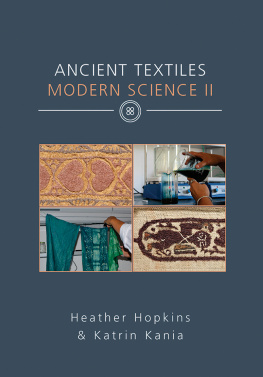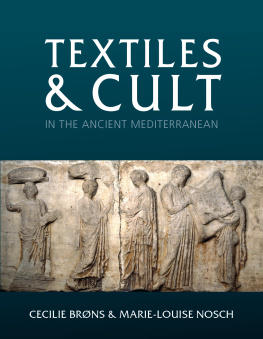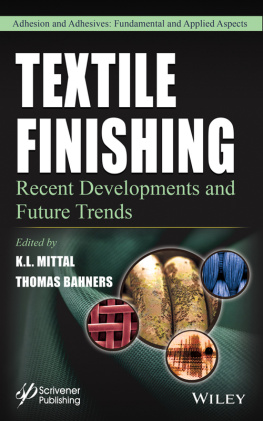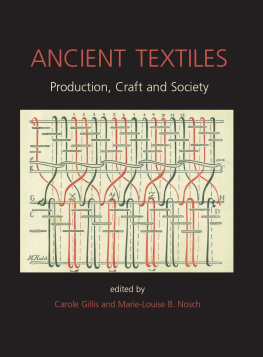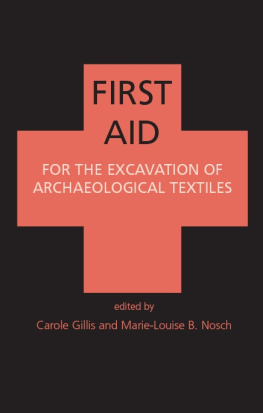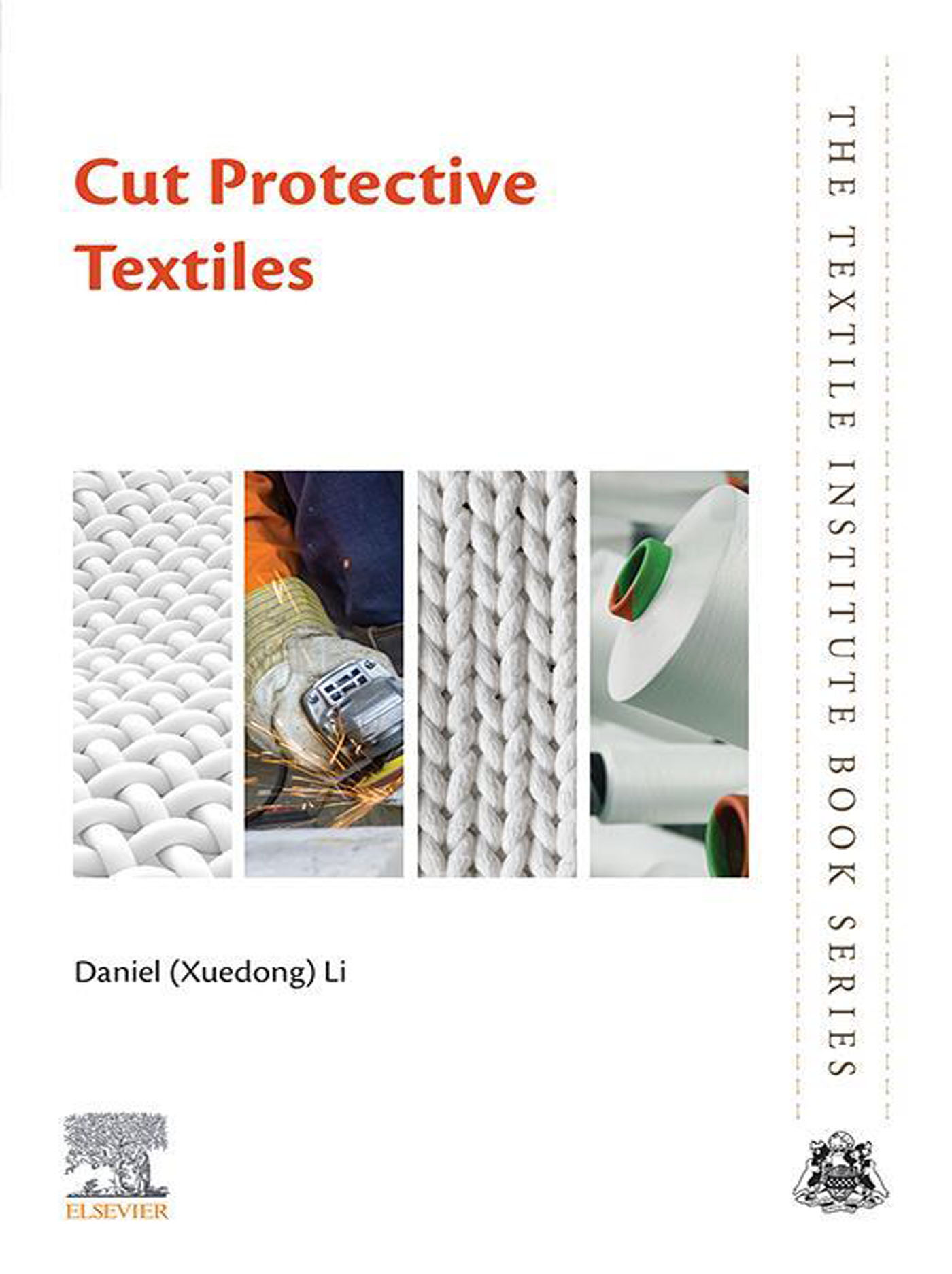Table of Contents
List of tables
- Tables in 1
- Tables in 2
- Tables in 3
- Tables in 4
- Tables in 5
- Tables in 6
- Tables in Appendix C
List of illustrations
- Figures in 1
- Figures in 2
- Figures in 3
- Figures in 4
- Figures in 5
- Figures in 6
- Figures in Appendix C
Landmarks
Table of Contents
Cut Protective Textiles
Daniel (Xuedong) Li

Copyright
Woodhead Publishing is an imprint of Elsevier
The Officers Mess Business Centre, Royston Road, Duxford, CB22 4QH, United Kingdom
50 Hampshire Street, 5th Floor, Cambridge, MA 02139, United States
The Boulevard, Langford Lane, Kidlington, OX5 1GB, United Kingdom
Copyright 2020 Elsevier Ltd. All rights reserved.
No part of this publication may be reproduced or transmitted in any form or by any means, electronic or mechanical, including photocopying, recording, or any information storage and retrieval system, without permission in writing from the publisher. Details on how to seek permission, further information about the Publishers permissions policies and our arrangements with organizations such as the Copyright Clearance Center and the Copyright Licensing Agency, can be found at our website: www.elsevier.com/permissions.
This book and the individual contributions contained in it are protected under copyright by the Publisher (other than as may be noted herein).
Notices
Knowledge and best practice in this field are constantly changing. As new research and experience broaden our understanding, changes in research methods, professional practices, or medical treatment may become necessary.
Practitioners and researchers must always rely on their own experience and knowledge in evaluating and using any information, methods, compounds, or experiments described herein. In using such information or methods they should be mindful of their own safety and the safety of others, including parties for whom they have a professional responsibility.
To the fullest extent of the law, neither the Publisher nor the authors, contributors, or editors, assume any liability for any injury and/or damage to persons or property as a matter of products liability, negligence or otherwise, or from any use or operation of any methods, products, instructions, or ideas contained in the material herein.
British Library Cataloguing-in-Publication Data
A catalogue record for this book is available from the British Library
Library of Congress Cataloging-in-Publication Data
A catalog record for this book is available from the Library of Congress
ISBN: 978-0-12-820039-1 (print)
ISBN: 978-0-12-820391-0 (online)
For information on all Woodhead Publishing publications visit our website at https://www.elsevier.com/books-and-journals
Publisher: Matthew Deans
Acquisitions Editor: Brain Guerin
Editorial Project Manager: John Leonard
Production Project Manager: Debasish Ghosh
Cover Designer: Christian Bilbow
Typeset by MPS Limited, Chennai, India

Foreword
Alan E. Learned Dr. , Retired Global Technology Manager, DuPont de Nemours, Inc.
Over 1 million workers in North America will be taken to the emergency room this year for the treatment of hand injuries. Seventy percent of those injuries occurred, while the workers were not wearing any protective gloves, and the remaining 30% were wearing the wrong type of gloves for the level of hazard they were experiencing.
So YES!!!, cut protective gloves is an important topic from both a business cost perspective, with the average medical treatment cost ranging from $6000 to $10,000 for each injury, and from a personal pain and suffering perspective, where the impact is not only in the workplace, but also at home among families when a mother/father/wife/husband/brother/sister/son/daughter returns from work injured. According to the Occupational Health and Safety Administration (OSHA is a federal agency in the United States responsible for assuring a safe and healthful environment for workers), more than 70% of those injuries could have been avoided with the appropriate training, design, and personal protective equipment, such as cut protective gloves.
It was over a decade ago at a technology leadership conference that I first met Dr. Xuedong Li. My career in textiles and technology development has spanned over 40 years, and in that first meeting, I was impressed by Dr. Lis passion for safety and protection. During the following years while Dr. Li worked in my global technology team, I learned to appreciate even more his strong intellectual curiosity that drove him to relentlessly pursue the fundamentals of his development projects, searching for better ways to provide higher performance and better protection.
Dr. Lis book on Cut Protective Gloves will provide you both a broad and deep look at this fascinating and complex topic, cut protection. He will introduce the basic building blocks of the protective materials, polymers, and fibers, how the fibers and fabrics are measured to understand their ability to protect the workers, and how the materials are constructed into their final protective form, gloves. Dr. Li will explore with you the fundamental mechanisms of cut protection and will even unpack for you several of the current mysteries that still exist in this field.
Whether you are just beginning your journey to understand cut protection, or if you are an experienced professional in this area, I believe you will find new insights that will act as a catalyst to ultimately help workers return home safe and uninjured.
Foreword
Vlodek Gabara Dr. , Retired Global Technology Manager, DuPont de Nemours, Inc.
I have enjoyed writing this foreword for two reasons: I have spent most of my professional life doing research in the field of advanced fibers and I have known, the author, Dr. Daniel Li, for most of his professional life.
R&D in advanced fiber field shares many elements with research on other fibers. In both cases, one needs to develop understanding of polymer chemistry and technology of polymer formation, in both one needs to develop understanding of engineering of fiber formation and many other technologies. What distinguishes the advanced fiber field is the necessity to understand how these fibers perform in final applications. This is as sophisticated and as fundamental science as science of polymerization chemistry or spinning solution rheology. This understanding is necessary to design final objects while maximizing the utilization of the unusual physical properties of these fibers. The unique anisotropy of properties of these fibers has to be considered in almost all applications.
Dr. Li monograph covers cut protection, one the important applications of these fibers. The monograph covers a complete range of topics required to understand the problem. It includes basic science of fibers, yarns, composite yarn, and finally fabrics and their production. A very useful, brief description of fibers used in this application gives readers the necessary background information. Mechanism of cut protection and treatment of fabrics used in this application completes the monograph.




